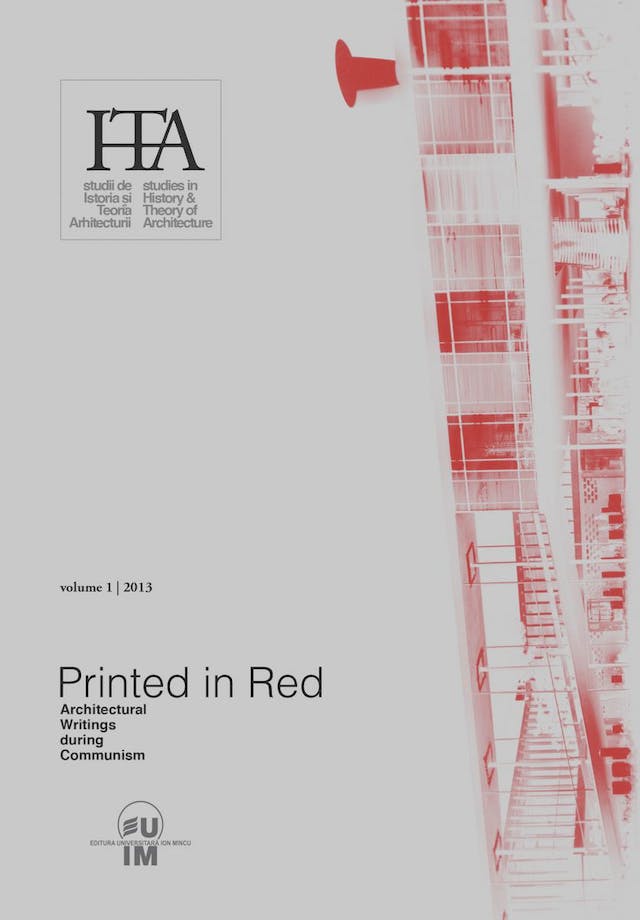Civic Centers under Ceaușescu’s RuleThe Failure to Articulate a Professional Discourse
Civic Centers under Ceaușescu’s Rule
The Failure to Articulate a Professional Discourse
by
Alexandru Răuță
Keywords
Civic centers
public space
agro-industrial towns
county capitals
urbanization
The present research investigates one particular formula of constituting public space in communist Romania. Since the 1920s, civic centers, understood as central squares defined by new public buildings, were perceived, by various professionals, as essential components of restructuring processes conducted at level of built fabrics, in view of modernization. Especially under Nicolae Ceaușescu (1965-1989), because of a more prosperous first decade and, probably, because of extreme centralization, the civic center principle gained a (quasi-)normative dimension and arrived at being applied in numerous cases.
This article is focused on two policies promoted under Nicolae Ceaușescu, which relied on the civic center concept. The first policy aimed at urbanizing a large number of villages. For about a decade, this officially assumed goal was however mainly debated, while applied only to a very limited extent. During this decade of debates, the civic center principle occupied a visible place in publications specialized in architecture. Often, the most important dimension of this principle was the instrumental one. Civic centers were perceived as devices for guiding communities in their transition from a rural to an urban condition. True enough, some authors proved more reluctant than others about such potential, but they still constructed their arguments starting from a technocratic premise.
The second policy concerns the restructuring of urban fabrics from county capitals through civic centers. Admittedly, there are some difficulties in approaching this process as a policy, since there are only indirect indications of a programmatic attitude toward constituting civic centers in county capitals. Nevertheless, its systematic application, for 16-17 cases out of 40 possible, allows speaking of consistent and continuous expectations of high-ranked politicians in this respect. In addition, the professional heritage of some pre-war elite architects and city planners, who had favored this approach, is recognizable under the communist regime in some language and design choices. This apparent consensus between an architectural practice sensitive to political expectations and a pre-communist professional heritage is not, however, the result of public debate. As such, for these county capitals, professional publications are able to serve only as indicators of trends, not as witnesses for a rational exchange of opinions or of status negotiations.
What is also missing from professional publications is a clearly articulated and widely accepted theory on how to relate civic centers from county capitals to those of urbanized villages. Indirectly, from the idea of restructuring the whole Romanian network of settlements into systems of local hierarchies and interdependencies, it is possible to deduce that the former was often expected to represent at least a qualitative leap from the latter. There are signs indicating that architects wanted also more than just civic centers for central areas of county capitals. Yet, an enduring perception on Romanian cities, especially the extra-Carpathian ones, was that they present predominantly rural features. As such, unavoidably, there was only a short step to limiting architectural practice within some common programmatic aspects between civic centers for large cities and those for future agro-industrial towns. These opposite forces however, did not generate enough momentum in professional reflections to kindle consistent debates. In this sense, the editorial team from the professional review Arhitectura restrained its role to a mere neutral support, with its liberty limited to presenting or not presenting the discourses of others. Trapped by a double layer of insulation, that of the Soviet communist encampment and that of Ceaușescu’s autarchic ambitions, the architectural profession in Romania ultimately limited itself in this case at reworking an increasingly obsolete programmatic concept.
Published in

Chicago citation style
DOI:
10.54508/sITA.1.10
1 / 2013
Civic Centers under Ceaușescu’s Rule. The Failure to Articulate a Professional Discourse5 / 2017
Irina Tulbure. Architecture and Urbanism in Romania, 1944-1960: Constraint and Experiment10 / 2022
Alexandru Sabău, Arhitectura de hârtie: forme alternative de creație arhitecturală în România anilor 1980